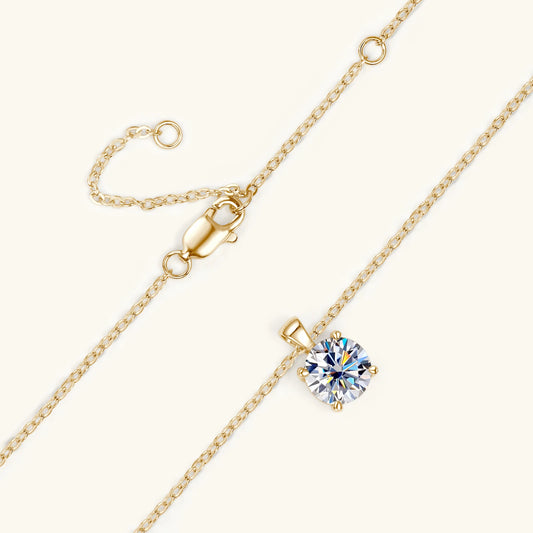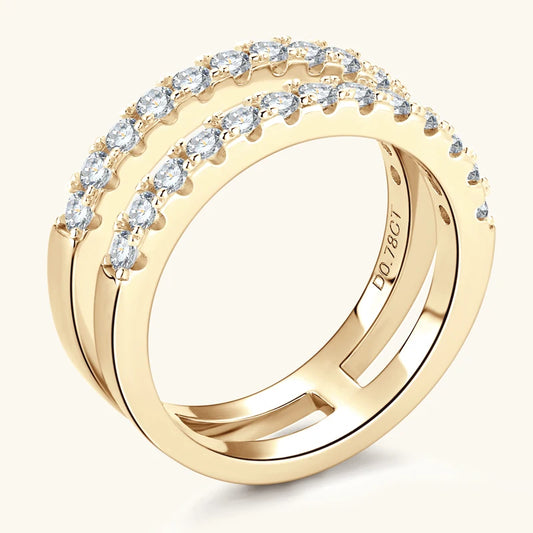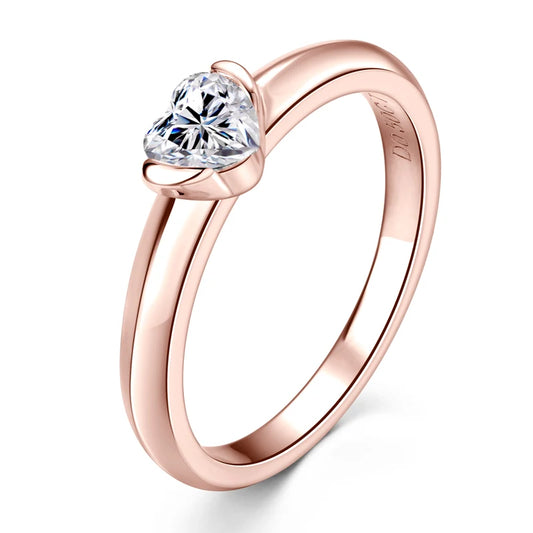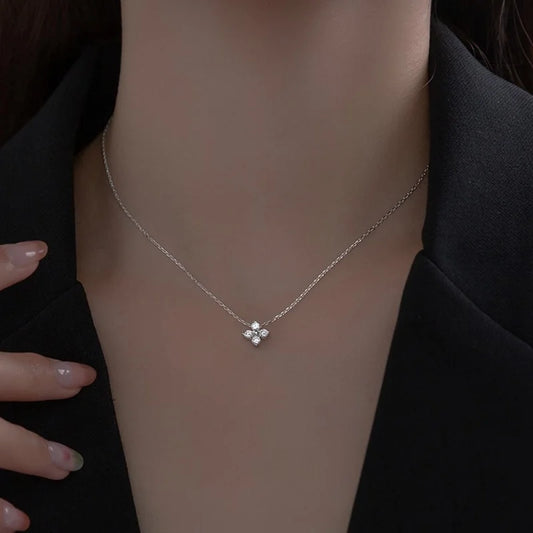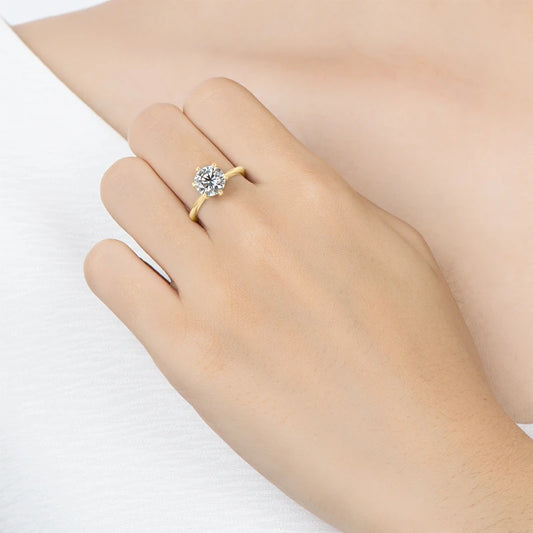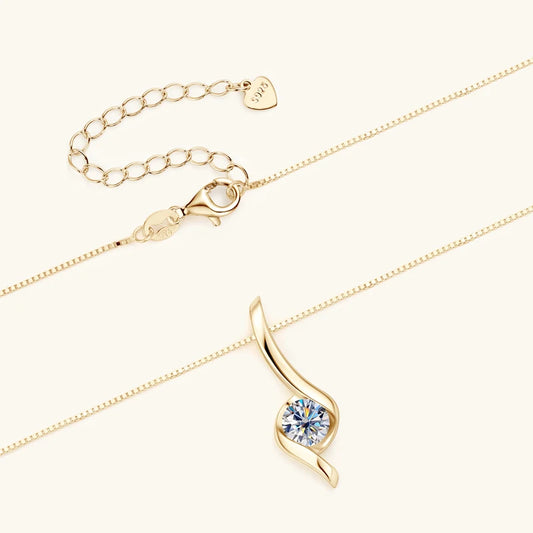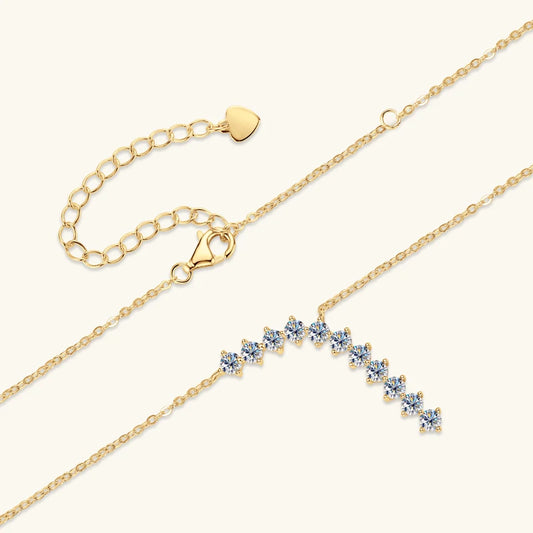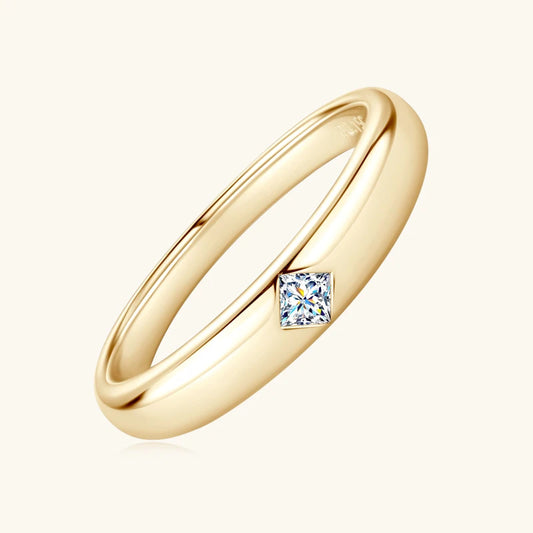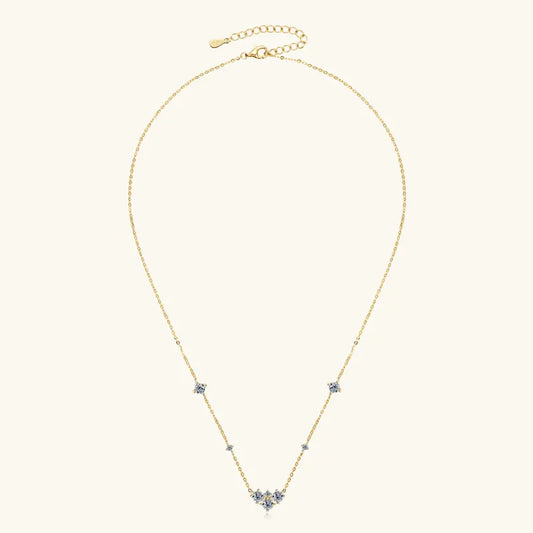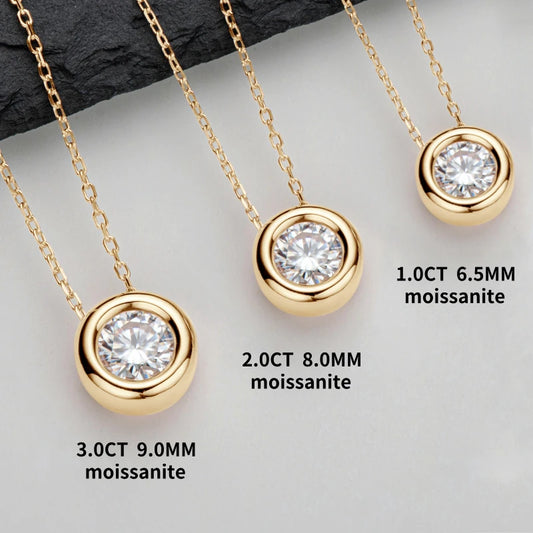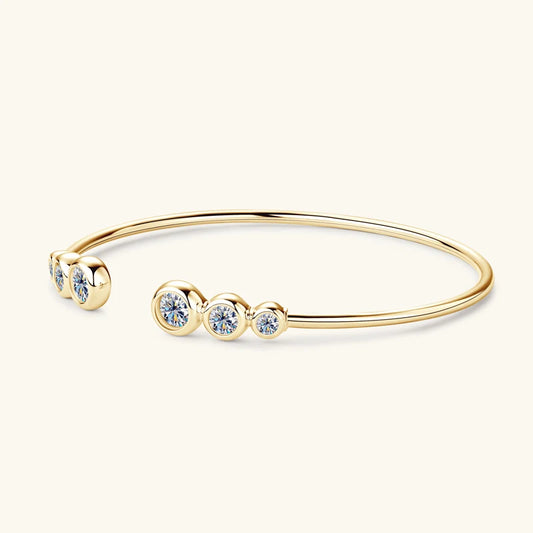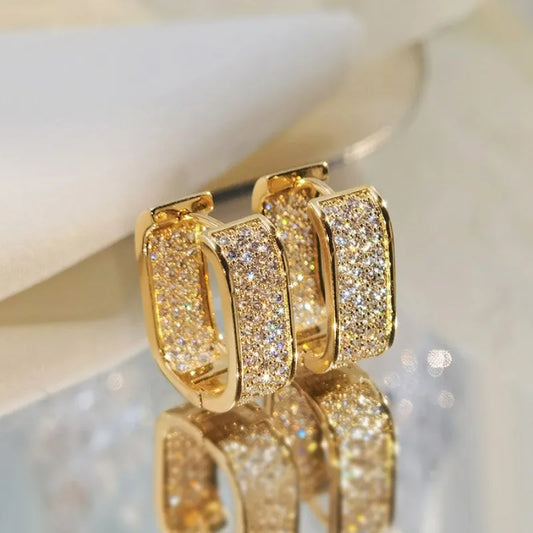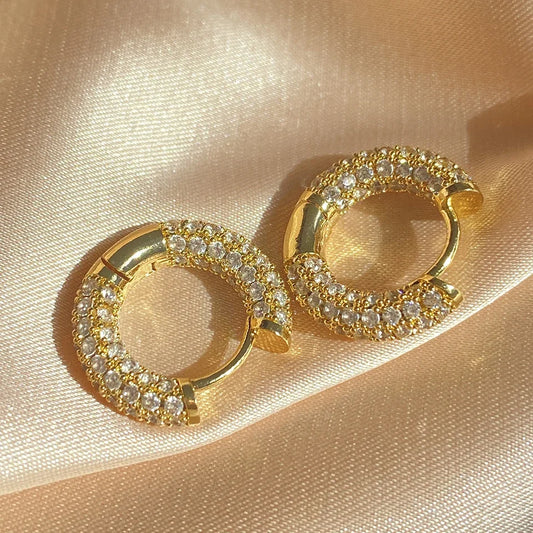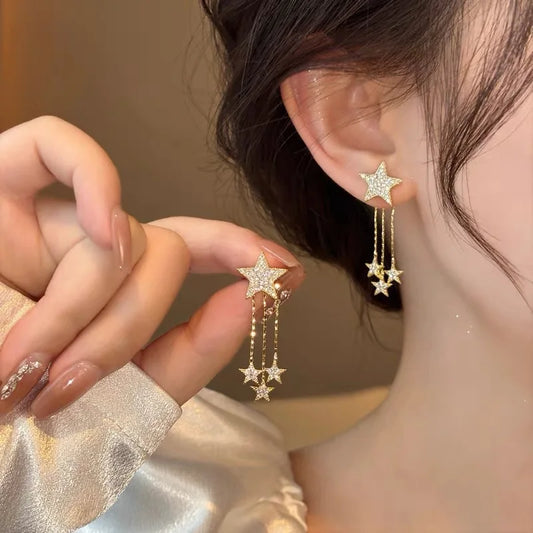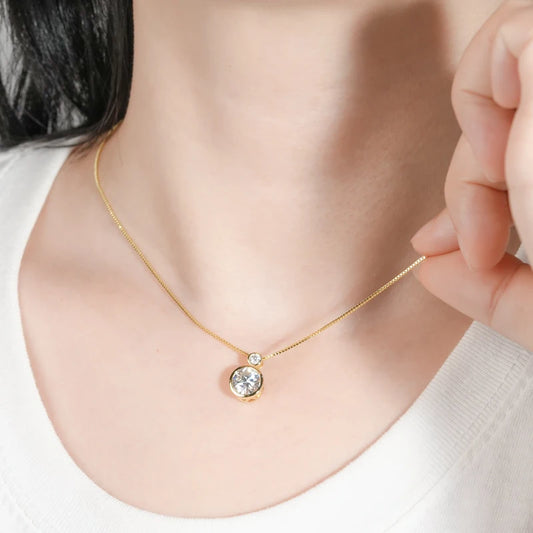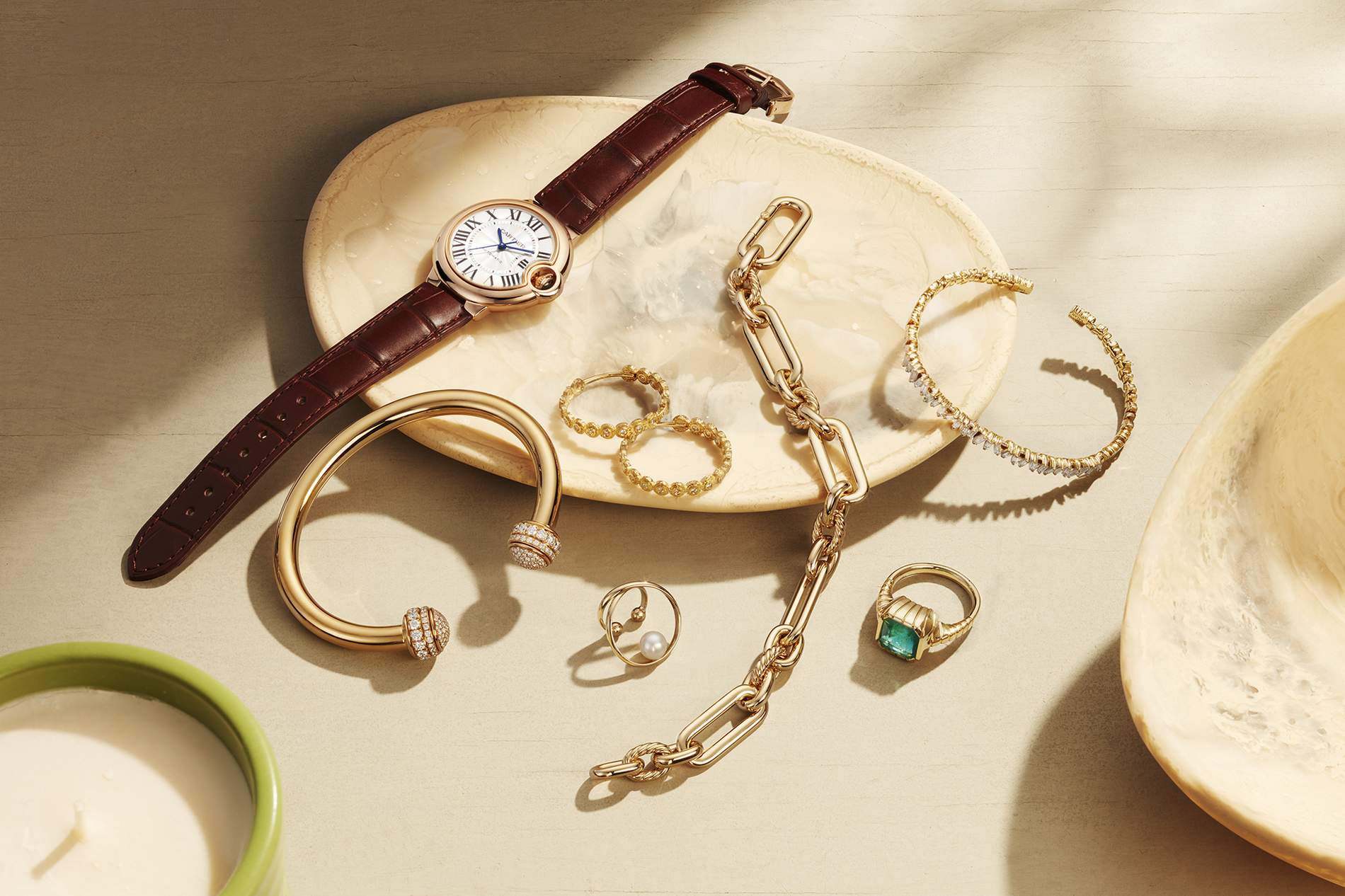Are Moissanite and Lab Diamonds the Same? 2025

شارك
When it comes to fine jewelry, two popular choices often spark confusion among buyers: moissanite and lab-grown diamonds. Both are dazzling, durable, and ethical alternatives to mined diamonds, but are they truly the same? As an expert in moissanite jewelry and a passionate advocate for sustainable and cost-effective options, I’m here to clear up the differences and help you make an informed decision for your next purchase.
In this article, we'll explore how moissanite and lab diamonds are created, their unique properties, pricing, and which one might be best for your style and values. Whether you're shopping for an engagement ring, anniversary gift, or any other stunning piece of jewelry, understanding these two gemstones is essential. Let's dive in and discover the truth behind these brilliant stones!
Moissanite Bracelets | Shop Now
Moissanite Best Sellers | Moissanite Engagement Ring Band Sets | Moissanite Matching His & Hers Rings | Moissanite Rose Gold Wedding Sets | Moissanite White Gold Wedding Sets | Moissanite Affordable Sets | Moissanite Pendant Studs | Moissanite Clustered Sets | Moissanite Set | Moissanite Art Deco Jewelry Sets
What is Moissanite?
Moissanite is a silicon carbide crystal originally discovered in 1893 by French chemist Henri Moissan in a meteor crater. While the original discovery was rare, today, moissanite gemstones are lab-created, offering a stunning, affordable, and eco-friendly alternative to diamonds. Moissanite’s brilliance is known to exceed that of diamonds, due to its higher refractive index.
The Chemistry Behind Moissanite
Moissanite is made from silicon carbide, a compound composed of silicon and carbon. The process of creating moissanite involves synthesizing these elements under high pressure and temperature, mimicking the conditions in space where natural moissanite crystals were originally formed.
Moissanite Sets | Shop Now
Moissanite Nature Inspired Jewelry Sets | Moissanite Toi et Moi Jewelry Sets | Moissanite Engagement Ring | Moissanite Wedding Band | Moissanite Eternity Ring | Moissanite Promise Ring | Moissanite 3 Stone Ring | Moissanite Stackable Ring | Moissanite Oval Cut Ring | Moissanite Emerald Cut Ring
Moissanite’s Appearance and Properties
One of the key characteristics of moissanite is its extraordinary fire—the ability to reflect light in colorful flashes. This is one reason why moissanite jewelry is so eye-catching. While diamonds are typically known for their brilliant white sparkle, moissanite gives off a slightly more colorful light display. Though moissanite and diamonds are similar in appearance, moissanite stones tend to have a more noticeable rainbow effect, especially under direct light.
What is a Lab-Grown Diamond?
A lab-grown diamond, also known as a synthetic diamond, is an actual diamond that is produced in a laboratory, replicating the natural conditions under which diamonds are formed deep within the Earth. There are two primary methods for creating lab diamonds: High Pressure High Temperature (HPHT) and Chemical Vapor Deposition (CVD). Both processes involve carbon atoms, which are crystallized to form a diamond that is chemically identical to a naturally occurring one.
Moissanite Necklaces | Shop Now
Moissanite Cushion Cut Ring | Moissanite Round Cut Ring | Moissanite Heart Shaped Ring | Moissanite Princess Cut Ring | Moissanite Pear Cut Ring | Moissanite Marquise Cut Ring | Moissanite Asscher Radiant Cut Ring | Moissanite Pearl Earrings | Moissanite Rose Gold Ring | Moissanite Yellow Gold Ring
The Process of Creating Lab Diamonds
In the HPHT method, carbon is subjected to extreme pressure and temperature, simulating the Earth’s core, while the CVD method uses a gas mixture to grow diamond crystals on a substrate. Both methods produce a real diamond, indistinguishable from a natural diamond unless inspected by a gemologist.
Lab Diamonds vs. Natural Diamonds
Although lab-grown diamonds share the same chemical composition, crystal structure, and physical properties as natural diamonds, the key difference lies in their origin. Lab diamonds are man-made, offering a more ethical, sustainable, and affordable option. They are virtually identical to their mined counterparts in appearance and durability, making them a popular choice for engagement rings and fine jewelry.
Moissanite Earrings | Shop Now
Moissanite White Gold Ring | Moissanite Sterling Silver Ring | Moissanite Platinum Ring | Moissanite Black Ring | Moissanite Men Ring | Moissanite Solitaire Necklaces | Moissanite Tennis Necklaces | Moissanite Cross Necklaces | Moissanite Choker Necklaces | Moissanite Name Initial Pendants
Key Differences Between Moissanite and Lab Diamonds
Now that we have an understanding of both gemstones, let’s explore the key differences between moissanite and lab-grown diamonds in terms of composition, appearance, and pricing.
1. Composition and Origin
-
Moissanite: Made from silicon carbide, moissanite is a unique gemstone with a different chemical structure than diamonds. It is lab-created but is not a diamond.
-
Lab Diamonds: Lab diamonds are made from carbon and are chemically identical to natural diamonds. They are formed in a controlled laboratory environment using methods that mimic natural diamond formation.
2. Appearance
-
Moissanite: Known for its higher refractive index and more intense fire, moissanite gives off flashes of light with a visible rainbow effect. It may appear more colorful than a diamond, especially in certain lighting.
-
Lab Diamonds: Lab diamonds, on the other hand, have the same brilliance and sparkle as natural diamonds. They reflect white light, with fewer noticeable flashes of color compared to moissanite.
3. Durability
-
Moissanite: With a Mohs hardness of 9.25, moissanite is highly durable and suitable for everyday wear. However, it is slightly less hard than diamonds, which have a hardness of 10.
-
Lab Diamonds: As real diamonds, lab-grown diamonds are the hardest material on the Mohs scale, ensuring unmatched durability and resilience over time.
4. Pricing
-
Moissanite: One of the biggest draws of moissanite jewelry is its affordability. Moissanite is typically much less expensive than diamonds, with some stones costing a fraction of the price of lab-grown diamonds.
-
Lab Diamonds: While lab diamonds are more affordable than mined diamonds, they are still more expensive than moissanite due to the cost of production. However, they still offer significant savings compared to traditional diamonds.
5. Ethical Considerations
-
Moissanite: Being lab-created, moissanite is an ethical choice, as it doesn’t involve mining and the associated environmental impact. It is a sustainable and eco-friendly option for conscious consumers.
-
Lab Diamonds: Lab diamonds are also considered ethical, as they do not contribute to the environmental and social issues linked to traditional diamond mining. However, they may still have a higher environmental cost compared to moissanite due to the energy-intensive production process.
Moissanite Engagement Rings | Shop Now
Moissanite Heart Necklaces | Moissanite Cluster Necklaces | Moissanite Halo Pendant Necklaces | Moissanite Teardrop Drop Necklaces | Moissanite Circle Bezel Pendants | Moissanite Pearl Necklaces | Moissanite Men Necklace | Moissanite Cuban Link Chains | Moissanite Dog Tag Necklaces | Moissanite Rose Gold Necklaces
Which One is Right for You?
When deciding between moissanite and lab-grown diamonds, consider what is most important to you in a piece of jewelry. Here are some things to think about:
Budget-Friendly Option
If you're looking for a stunning, high-quality gemstone that won’t break the bank, moissanite is an excellent choice. It offers incredible sparkle, durability, and ethical benefits at a fraction of the price of diamonds.
If You Want a Real Diamond
If you prefer the authenticity and durability of a real diamond, but still want to avoid the environmental concerns tied to mining, lab-grown diamonds provide the perfect solution. They offer the same brilliance and value as natural diamonds, but without the high price tag.
The Look You Prefer
Some buyers may prefer the rainbow sparkle of moissanite, while others may prefer the more subdued brilliance of a diamond. It's all about personal preference and the type of sparkle that resonates with you.
Conclusion
While both moissanite and lab-grown diamonds are excellent choices for fine jewelry, they differ in several important ways. Moissanite offers incredible fire, a lower price point, and eco-friendly benefits, while lab diamonds provide the ultimate in diamond authenticity with similar durability to mined diamonds.
Ultimately, choosing between the two depends on your budget, ethical stance, and personal style. Either way, you’re guaranteed to enjoy a beautiful, timeless piece that will be cherished for years to come. Whether you're shopping for an engagement ring, pendant, or any other special piece, both options deliver exceptional beauty and value.
Moissanite Necklace Collections
Moissanite White Gold Necklaces | Moissanite Necklace Yellow Gold | Moissanite Sterling Silver 925 Necklaces | Moissanite Stud Earrings | Moissanite Hoop Earrings | Moissanite Drop Dangle Earrings | Moissanite Cluster Earrings | Moissanite Leverback Earrings | Moissanite Screw Back Earrings | Moissanite Round Cut Studs
Moissanite Earrings Collections
Moissanite Princess Cut Earrings | Moissanite Emerald Radiant Cut Earrings | Moissanite Pear Teardrop Earrings | Moissanite 1 Carat Earrings | Moissanite 2 Carat Earrings | Moissanite 3 Carat Earrings | Moissanite White Gold Earrings | Moissanite Rose Gold Earrings | Moissanite Sterling Silver 925 Earrings | Moissanite Men Earrings
Moissanite Bracelets Collections
Moissanite Tennis Bracelets | Moissanite Cuban Link Bracelets | Moissanite Bangle Bracelets | Moissanite Cross Bracelets | Moissanite Pearl Bracelets | Moissanite Rose Gold Bracelets | Moissanite White Gold Bracelet | Moissanite Sterling Silver 925 Bracelets | Moissanite Men Bracelet | Moissanite Men Tennis Chain Cuff Bracelet
Moissanite Watches Collections












